PROTECT YOUR DNA WITH QUANTUM TECHNOLOGY
Orgo-Life the new way to the future Advertising by AdpathwayDark descends upon a dead-end property atop a winding mountain road and Ian McMaster steps out into the forest.
Protective goggles perched atop his grey hair, torch in hand, McMaster is drawn into the gums that surround his rammed-earth home toward a white sheet shining in UV light like a stage prop moon.
He is not alone. He is setting out to show some musicians a moth. The mission, though, is almost certain to fail.
McMaster has gone looking for moths – or mothing – about four nights every week for the past seven years on the property that he and wife Chrissie share atop Mount Mellum in the Sunshine Coast hinterland of Queensland. In all those years he has only once seen the species of moth that singer-songwriter Emma Bosworth hopes to see on this night in late August. And that time McMaster wasn’t even mothing.
The retired business executive had returned home after a fruitless night spent around rotting bananas said to lure the endangered moth from the darkest depths of old growth rainforest. It was morning.
“There was this big, grey looking thing on my veranda door and I thought: oh what’s this? A bat? A mouse?” McMasters says. “Then I looked at it more closely and, lo and behold: southern pink underwing moth.”
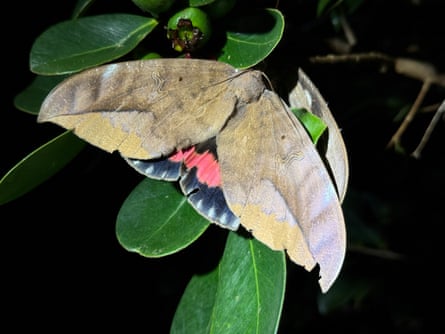
There on the flyscreen, this normally most elusive moth settled in to pass the day, and McMaster was able to leisurely admire it from the comfort of his own home. Until night fell.
“Then it disappeared,” he says. “And that was my one encounter with the southern pink underwing moth.”
McMaster has seen an innumerable quantity of moths since then. He has counted more than 2,000 species – about a quarter of which are yet to be scientifically described – on their property, an old cattle and banana farm that he and Chrissie have painstakingly rehabilitated to the point that about 90% of their 100 hectares of land is now a formally recognised nature refuge.
The McMasters have propagated and planted 15,000 or so indigenous plants on the property, restoring invasive lantana into subtropical rainforest and wet sclerophyll. Among those restored plants are carronia vines – the only known food source of the pink underwing larvae.
But, still, McMaster is looking for a second pink underwing.
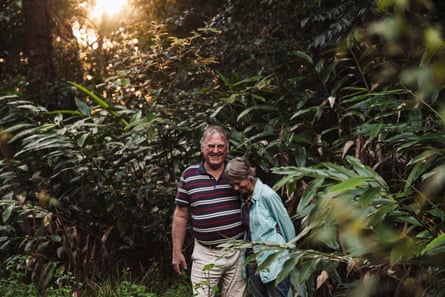
Striking and strange
Later that night with Bosworth, the moth’s appearance crops up in conversation, despite it not being spotted.
“Did someone say pictures of moths?” McMaster asks, rattling glasses of red wine as he plonks several large folios on to the table with a hefty thud.
Leafing through Moths of Mount Mellum Volume 3, by Ian McMaster, he takes a moment to track down. The moth’s forewings, longer than 10cm, are mottled brown and leaf-shaped. Upon its black underwings, flecked with white, two large splashes of vivid pink.
Even the pink underwing’s caterpillar is striking – when threatened it flashes a skull-like display of false eyes and teeth that would not look out of place in a Mexico City night club on the Day of the Dead.
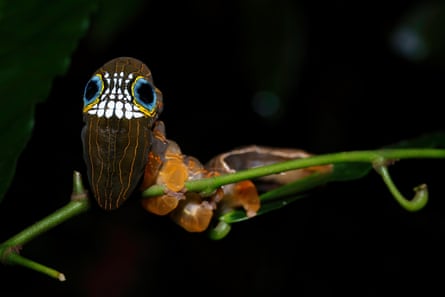
This, it turns out, is a particularly charismatic moth.
The pink underwing is among 11 priority species of invertebrates on the Australian government’s 2022–2032 threatened species action plan, a list that also includes the Lord Howe Island phasmid (a sausage-sized stick insect believed extinct for decades until it was sensationally rediscovered upon a sheer speck of rock in the Pacific), an ancient arachnid called the Kangaroo Island assassin spider and a giant earthworm from Gippsland said to grow up to 3 metres long.
And there are those who see the pink underwing as a flagship for the restoration of the lost rainforests of south-east Queensland and northern New South Wales.

Barung Landcare’s Cameron Burton estimates that of the rainforest that once covered the Maleny plateau near Mount Mellum, between 5% and 10% remains. First came the loggers for the prized timber of giant red cedars and hoop pines. Then the dairy farmers for the rich, red volcanic soil.
Burton says about 20 tiny islands of rainforest remain on the Maleny plateau. Some as small as a hectare, almost all are on private property. Highly fragmented, they are vulnerable to invasive species, fire, disease and climate change.
“There’s these little remnants [of rainforest] in a sea of kikuyu grass,” Burton says.
A story to get behind
Because people find the big, pretty moth and its otherworldly looking caterpillars that haunt these islands of rainforest so appealing, Burton sees the insects as a means to get landowners to care for its existing habitat and to muster the volunteers and funds to help extend and connect them.
“I’m a plant guy,” Burton says. “But the story is always the moth and the vine.”
It is a story told by the Barung Landcare president, Barbara Kelly, in a recently released children’s book: Luca and the Moth. It is a story Burton tells to musicians and artists, in the hopes they can help “move the dial on conservation”. Because, in an age saturated in information and data, he says, facts alone cannot save habitat.
“So that’s where I see the arts and music come into play,” he says. “To trigger feelings that might change behaviours.”
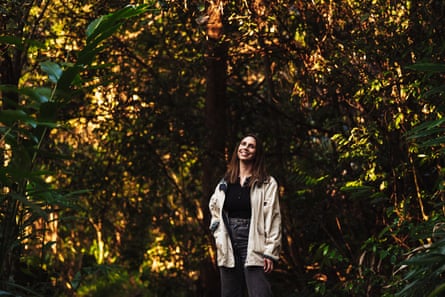
And it was Burton telling that story of the moth and the vine that drew Bosworth from her home in Buderim to spend a night at the McMasters’ property.
But it is not exactly the story she tells in Nightstand, the song Bosworth and her band The Meeting Seasons released on Friday.
A lifelong nature lover, Bosworth says the song was inspired by how moths helped her realise how many species there are sharing the Earth “that we just have no idea about” – “and how glorious that is”.
In Nightstand, she tries to imagine “what a creature like a moth is thinking about” in the face of its changing habitat and climate. She imagines a world in which the climate crisis is at “its tipping point”, in which “something really catastrophic” is imminent.
“I wake up and the moth is on the bedside table and we’re able to communicate and talk about, what are we gonna do?” Bosworth says. “And we’re in it together, in the last moments.”
The result is a “moody and spooky” song, darker and more psychedelic than her previous work.
She hopes those who hear it will take a moment to open their eyes and explore the natural beauty that surrounds them – and maybe get involved in local land care.
“The magic thing about the southern pink underwing moth is that: that moth is probably going to be the thing that gets us more rainforest regenerated up here on the Sunshine Coast,” she says.
“It is the story that is going to get more forest planted.”


 1 day ago
11
1 day ago
11






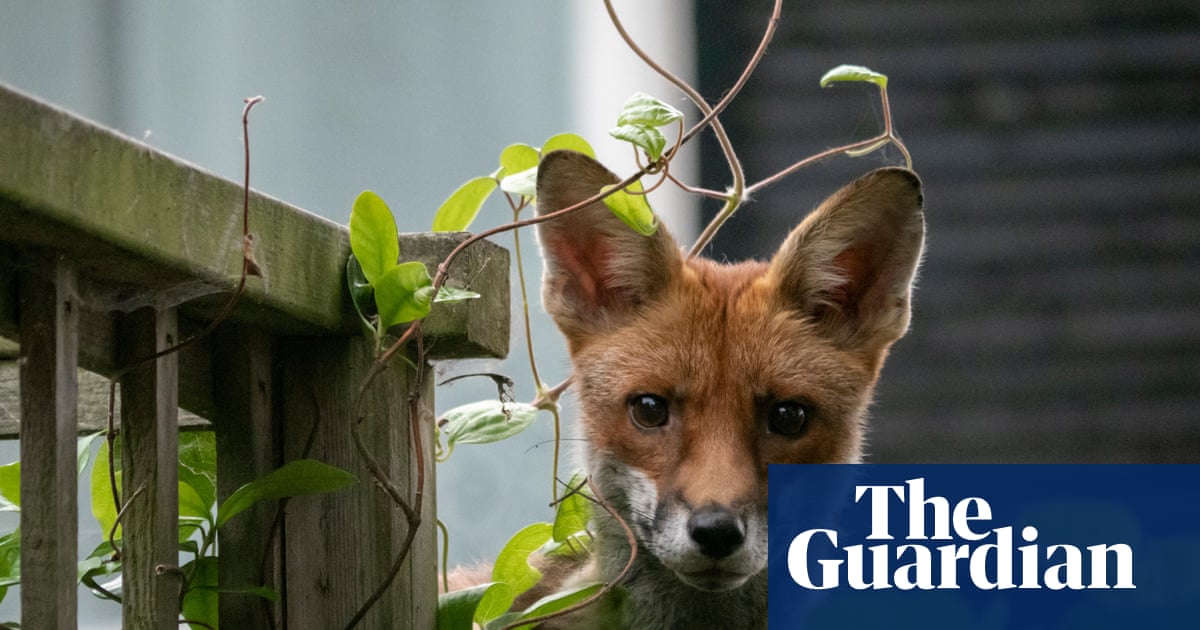














 English (US) ·
English (US) ·  French (CA) ·
French (CA) ·